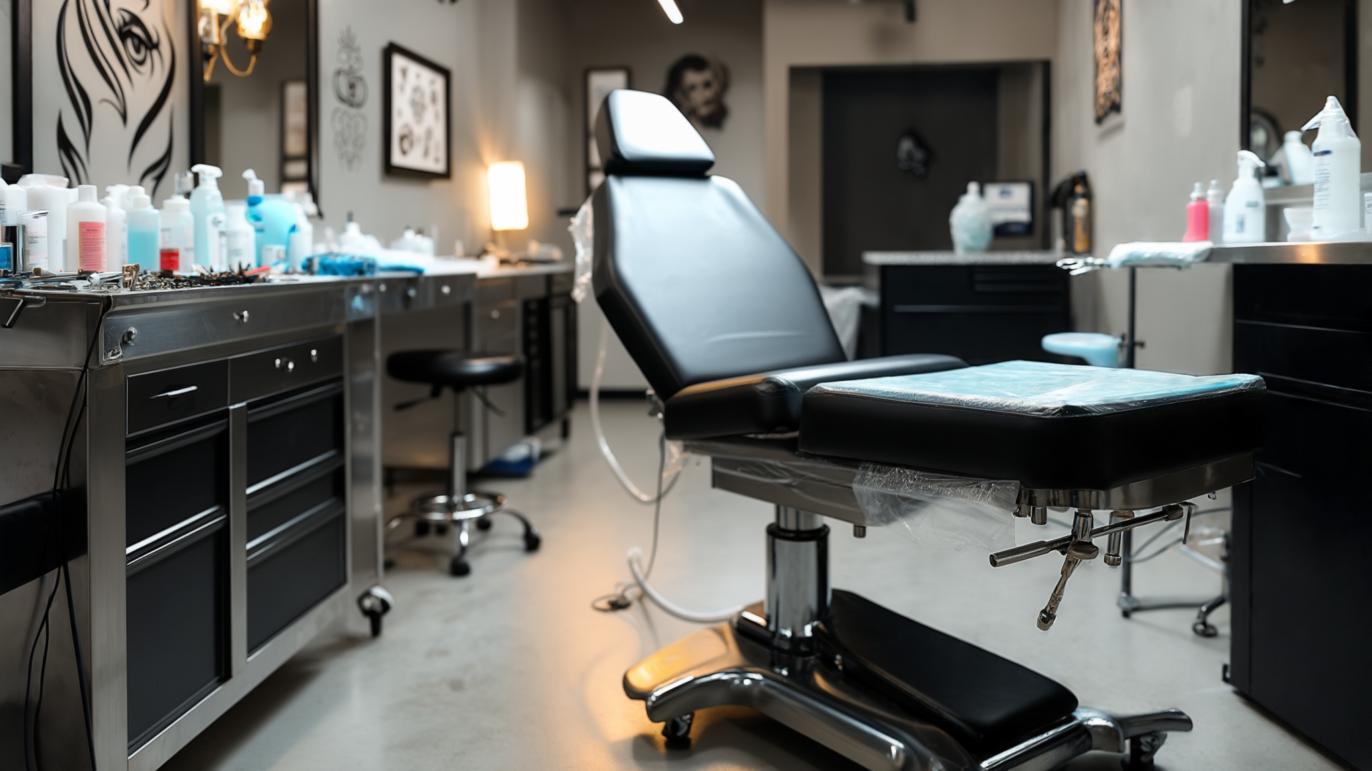The Importance of Hygiene Setup in Tattoo Artistry
Tattooing is an intricate and permanent form of art, and while the skill of the artist is crucial in producing beautiful designs, there is another fundamental aspect of the tattoo process that should never be overlooked: hygiene. A clean and sanitary environment is essential for both the safety of the client and the overall success of the tattoo. From sterilized equipment to maintaining a sterile workspace, proper hygiene is the backbone of any reputable tattoo studio. In this blog, we will explore the significance of hygiene setup in tattoo artistry and how artists ensure the highest safety standards.
1. The Tattoo Studio: A Clean and Sterile Environment
The tattoo studio is where the artistry happens, but it must also be a hygienic sanctuary. A clean and well-maintained space ensures that the tattoo process is as safe as it is enjoyable. From the moment a client enters the studio, they should be reassured by the environment’s cleanliness.
A high-quality tattoo studio will have designated areas for everything: a clean station for the artist’s equipment, a comfortable and sterile tattooing area, and a space for the client that encourages relaxation while prioritizing hygiene. The surfaces should be wiped down regularly, and everything the artist uses should be sterilized and organized. Most tattoo studios are equipped with air purifiers and good ventilation systems to ensure a comfortable, clean atmosphere during the tattooing process.
2. Sterilization of Tools and Equipment
One of the most critical aspects of tattoo hygiene is the sterilization of tools and equipment. All tattoo artists should follow strict sterilization procedures to minimize the risk of infections and cross-contamination. Reputable tattoo artists will use autoclaves — machines that use high-pressure steam to sterilize tattoo needles, tubes, and other reusable equipment.
Before any session, all equipment must be properly sanitized. Disposable items such as gloves, razors, and needles should always be single-use to prevent any contamination. The artist should also disinfect the tattoo machine before every use to maintain safety.
3. Proper Use of Disposable Supplies
Tattoo artists use disposable supplies to ensure hygiene and safety. These include items such as gloves, needles, razors, and plastic covers for tattoo machines and chairs. The use of disposable materials means that there is no risk of cross-contamination between clients.
Disposable items are used for each session and discarded after use to maintain a sterile environment. For example, the tattoo artist should never reuse gloves or needles. Every part of the tattoo process, from the stencil application to the ink mixing, requires fresh, sanitized materials to guarantee the safety of the client.
4. Hygiene for the Artist: Personal Safety Protocols
A professional tattoo artist understands that personal hygiene is just as crucial as the hygiene of the studio. The artist should always wear clean, disposable gloves during the tattoo process, change them between clients or after touching any surface that is not sterile, and regularly wash their hands. Good hygiene practices prevent the risk of infection and ensure the artist remains protected throughout the tattooing process.
Additionally, tattoo artists should wear protective clothing, such as aprons, and keep their personal items (e.g., cell phones, bags) away from the tattooing area. Keeping the workspace free from unnecessary personal items helps to maintain cleanliness.
5. Workspace Disinfection
Every tool and surface in the tattoo workspace must be disinfected thoroughly before and after each client. Tattoo artists typically use disinfectants that are hospital-grade to ensure that everything is free of harmful pathogens. From the artist’s chair to the surrounding countertops, tables, and the floor, cleaning should be a priority to avoid contamination.
Tattoo artists should also have easily accessible hand sanitizers available for both themselves and their clients, especially for touchpoints like door handles, armrests, or any shared surfaces. These extra measures can significantly reduce the spread of bacteria and viruses.
6. Aftercare and Client Hygiene
Proper aftercare is essential not only for healing the tattoo but also for minimizing the risk of infection. Tattoo artists typically provide clients with instructions on how to care for their new tattoo. These instructions often include keeping the area clean, applying healing ointments, and avoiding touching the tattoo with dirty hands.
Tattoo artists may also recommend antibacterial soap and moisturizers, as well as instructions on how to avoid sun exposure or tight clothing that may irritate the area during the healing process.
7. Maintaining a Clean Workstation Throughout the Session
A clean workstation is a critical component of any professional tattoo artist’s hygiene setup. A high-quality artist will set up a sanitized and sterile station before each client’s session, ensuring that nothing is left to chance. The artist will prepare fresh trays with sanitized equipment, such as ink caps and clean paper towels, to keep everything organized and sanitary.
During the tattooing process, everything — from the tattoo machine to the ink — should be kept in a clean and hygienic manner. Once the tattoo is completed, the artist will properly dispose of any single-use materials and disinfect the workstation to ensure it’s ready for the next session.
8. Understanding Local Health Regulations
In most places, tattoo studios must adhere to strict health and safety regulations that ensure the safety and hygiene of the client. Tattoo artists should be aware of and comply with these guidelines, which can include certification, studio inspections, and compliance with infection control standards. By following local health regulations, tattoo artists can ensure that their hygiene setup is up to par with the best practices in the industry.
9. Client Education: Ensuring Safe Practices
A good tattoo artist not only practices hygiene but also educates clients about how they can contribute to a clean and safe tattooing experience. This could include guidance on cleaning the tattooed area before the session or avoiding alcohol before getting a tattoo, which can increase the risk of infection.
By promoting safe and healthy practices, the tattoo artist ensures that both their craft and their client’s well-being are prioritized at all stages of the tattooing process.
Conclusion
Tattoo artistry is an intimate and permanent experience, and maintaining proper hygiene throughout the process is essential to ensure safety, comfort, and high-quality results. A tattoo artist’s hygiene setup is not just about cleanliness — it’s about creating an environment where the client feels comfortable and confident that their tattoo will not only look amazing but also heal properly without any complications.
By prioritizing sterilization, using disposable supplies, maintaining a clean studio, and adhering to strict hygiene protocols, tattoo artists can provide their clients with an experience that’s safe, professional, and sanitary. Always choose a tattoo artist who values hygiene, because your health and the lasting beauty of your tattoo depend on it.


